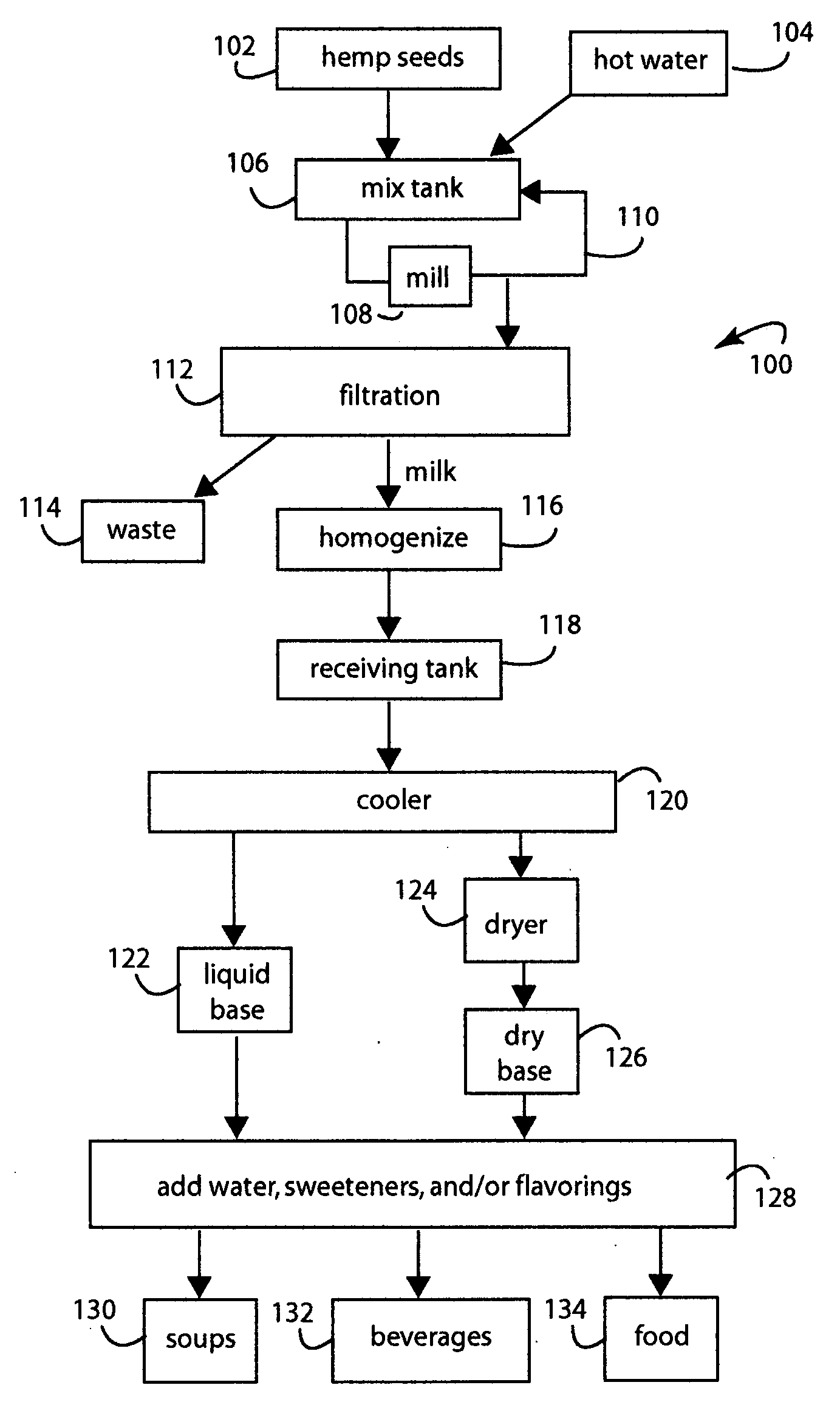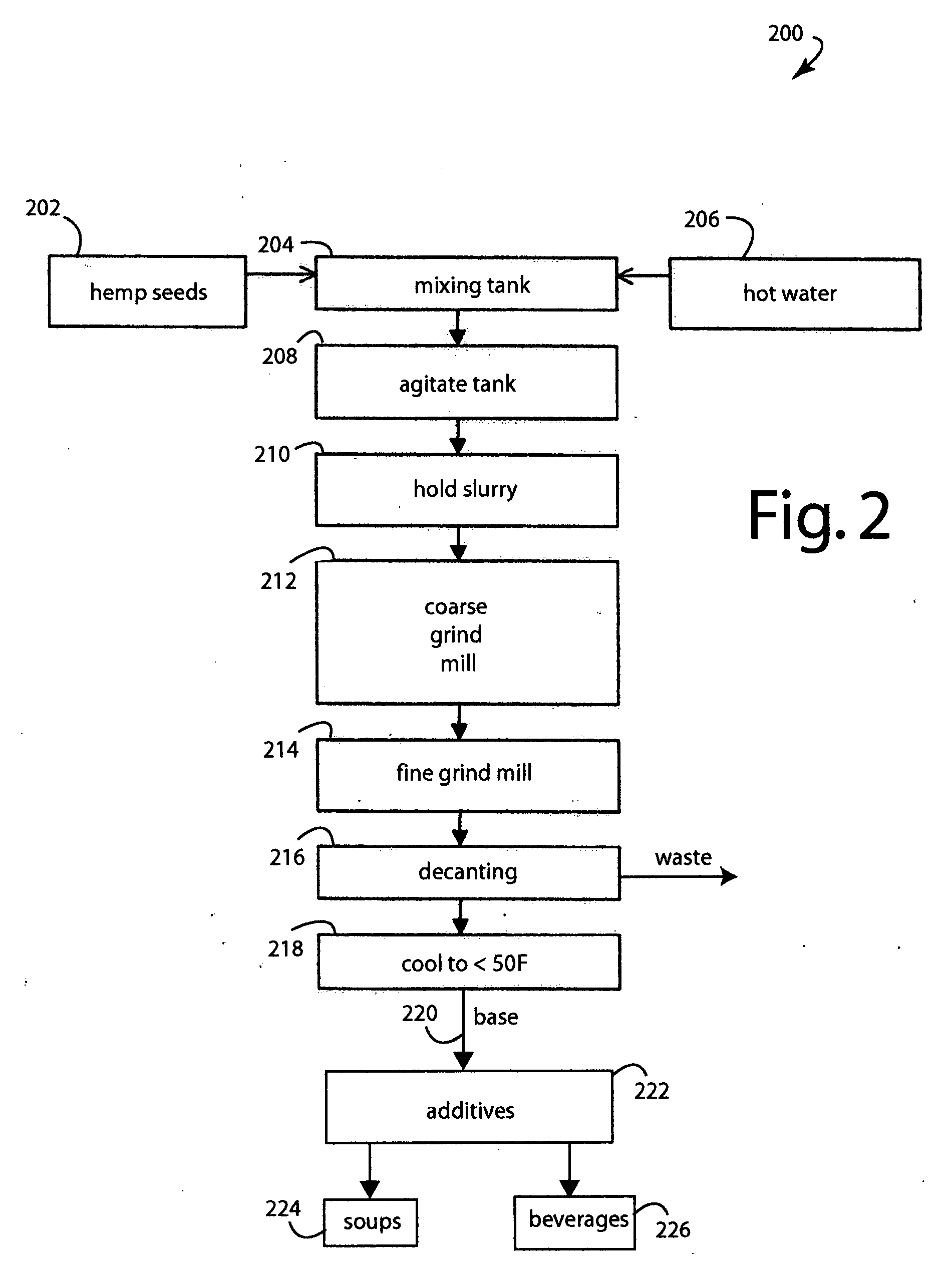Hemp food product base and processes
- Summary
- Abstract
- Description
- Claims
- Application Information
AI Technical Summary
Benefits of technology
Problems solved by technology
Method used
Image
Examples
Embodiment Construction
[0017]FIG. 1 represents a batch process embodiment of the present invention, and is referred to herein by the general reference numeral 100. Process 100 begins with hemp seeds 102 that have been cultivated to have low levels of tetrahydrocannabinol (THC) alkaloid, e.g., less than 0.3%. Hot water 104 heated to more than 200° F. is mixed with the hemp seeds in a mixing tank 106. Mixing ratios are in the range of 9-25% weight of hemp seeds to water, depending on the final applications. In general, five parts of water to one part hemp seeds is a good starting point.
[0018]The mixing tank 106 includes a steam-jacketed tank used to cook and thereby soften the mixture at 180-200° F., e.g., 10-30 minutes. Lower temperatures than that will not soften the hemp seeds well enough and yields will suffer. Cooking above 200° F. should be avoided because it tends to deteriorate the naturally occurring vitamins, minerals, and delicate Omega-3 and Omega-6 fatty acids.
[0019]The cooking of the hemp seed...
PUM
 Login to View More
Login to View More Abstract
Description
Claims
Application Information
 Login to View More
Login to View More - R&D
- Intellectual Property
- Life Sciences
- Materials
- Tech Scout
- Unparalleled Data Quality
- Higher Quality Content
- 60% Fewer Hallucinations
Browse by: Latest US Patents, China's latest patents, Technical Efficacy Thesaurus, Application Domain, Technology Topic, Popular Technical Reports.
© 2025 PatSnap. All rights reserved.Legal|Privacy policy|Modern Slavery Act Transparency Statement|Sitemap|About US| Contact US: help@patsnap.com



